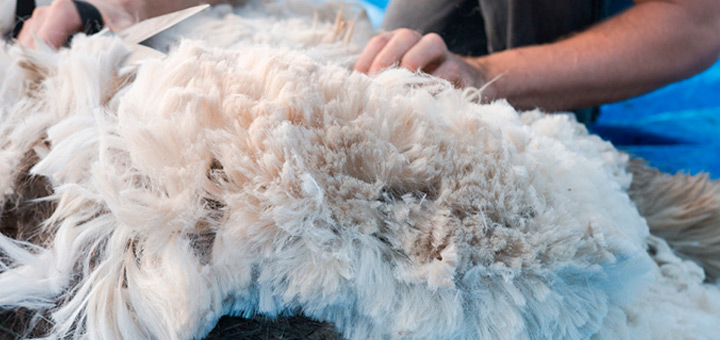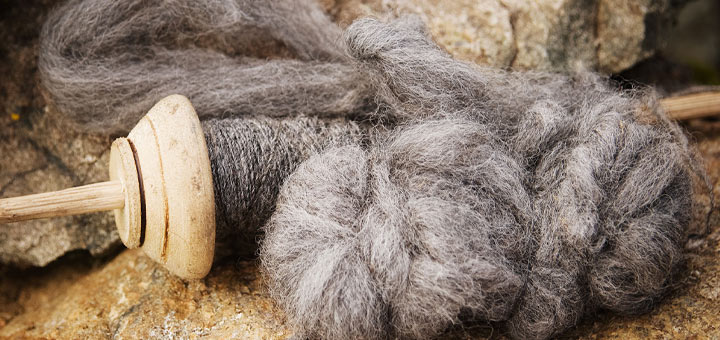Alpaca is the softest, most comfortable, and cozy wool. The feeling of an alpaca shawl or sweater on the skin is truly a comforting and enjoyable experience. Rare are the fibers, especially wool, that feel great on the skin.
Alpaca wool is renowned for being one of the most prized natural fibers on the planet. The fashion industry has acknowledged its benefits and properties for some time ago, and now, the alpaca fiber is considered luxury wool, which adds to its price, and of course, the demand.
What makes alpaca fleece and fiber so well known and characteristic is the softness, lightweight feeling, and breathable material that delivers exquisite garments. Even more, the alpaca fiber comes from the cute animals living in South America. They are easy on the planet and nature, delivering one of the greatest wool on the planet.
However, to get the final products, the alpaca fleece and the fiber go through a special process. So, the alpaca yarn process is unique to the wool itself. There are several steps that deliver fabulous products. What is alpaca yarn? Here are all the steps that describe in detail how the alpaca yarn is made.
As mentioned above, the alpaca wool comes directly from the Alpaca animal. More specifically, the wool is derived from the natural fibers that grow on alpacas. There are different alpaca wool that comes from the two different breeds: the Huacaya and the Suri.
Because of the type of fiber, the Huacaya alpaca delivers fluffy sheep-like wool, while the Suri alpaca delivers silkier, more lustrous wool. As animals, the alpacas are considered to be easy keepers. This is because they do not require a lot of care, especially if you take into consideration that they have survived for many years, in the most different and extreme weather conditions.
Furthermore, they are gentle on the grass since they have soft pads. The best wool and fleece come from alpacas that are happily breaded, and that means keeping them happy and healthy in their natural living habitat.

One especially interesting thing about the alpaca is that this camelid is shorn only once a year. It is done between January through April. This specific period is chosen so that the alpacas are allowed to regrow their coats through the warmer months and eliminate the possibility of heat stress. By the time winter comes, the alpacas will have grown their wool which will keep them warm.
The shearing itself is done when the fiber achieves a certain length, and it is done with scissors. 4 people are required for one alpaca shearing because this gentle animal can be quite resistant. The wool is then sorted according to the length of the fiber. The coarsest wool is used for felted jewelry, while the finer wool is used for garments production.
You can also read: Differences between Alpaca Fibers and Other Natural Fibers
When the process of sorting the fiber according to its length is done and finished, the next step is carding. Any seed, burs, and other waste that the alpacas may have picked up on their fleece is carded away using a fine brush. This process can also be done by hand.
The process includes combining the individual wool fibers in a uniform direction. At this point, the alpaca wool can be dyed, although it comes in already 22 different colors. When all of this is finished, the alpaca wool can be spuned into yarn.

Spinning is a process that is defined as turning raw wool fibers into strong and consistent threads. With spinning, the threads are combined to form stronger fibers. It is a step that is time-consuming and very important for getting yarn.
When the yarn is formed through the final process of spinning, the next step is washing it so that all the impurities are removed. It is best to be done with organic and natural substances that are great for fiber. The dirt will be thoroughly removed and wet as it is, it is hung to air-dry.
As soon as the wool is well dried, it is ready for the final step to be turned into a textile garment. The yarn as it is in this stage, is raw, and it can be used for knitting and crocheting different garments. It is the final stage of using the yarn as a ready-to-use product.
Now you know how alpaca yarn is made. Remember that there are 6 steps: breeding, shearing, carding, spinning, washing and knitting, weaving, and crocheting. We hope this information has been useful to you!
At Silkeborg Uldspinderi you can find a variety of products that are made of alpaca yarn with the highest quality. Take a look at the wide selection and get your alpaca yarn products now. If you want to buy any alpaca scarves, shawls, cushions, or throws, please don’t hesitate to contact us through our contact page.
